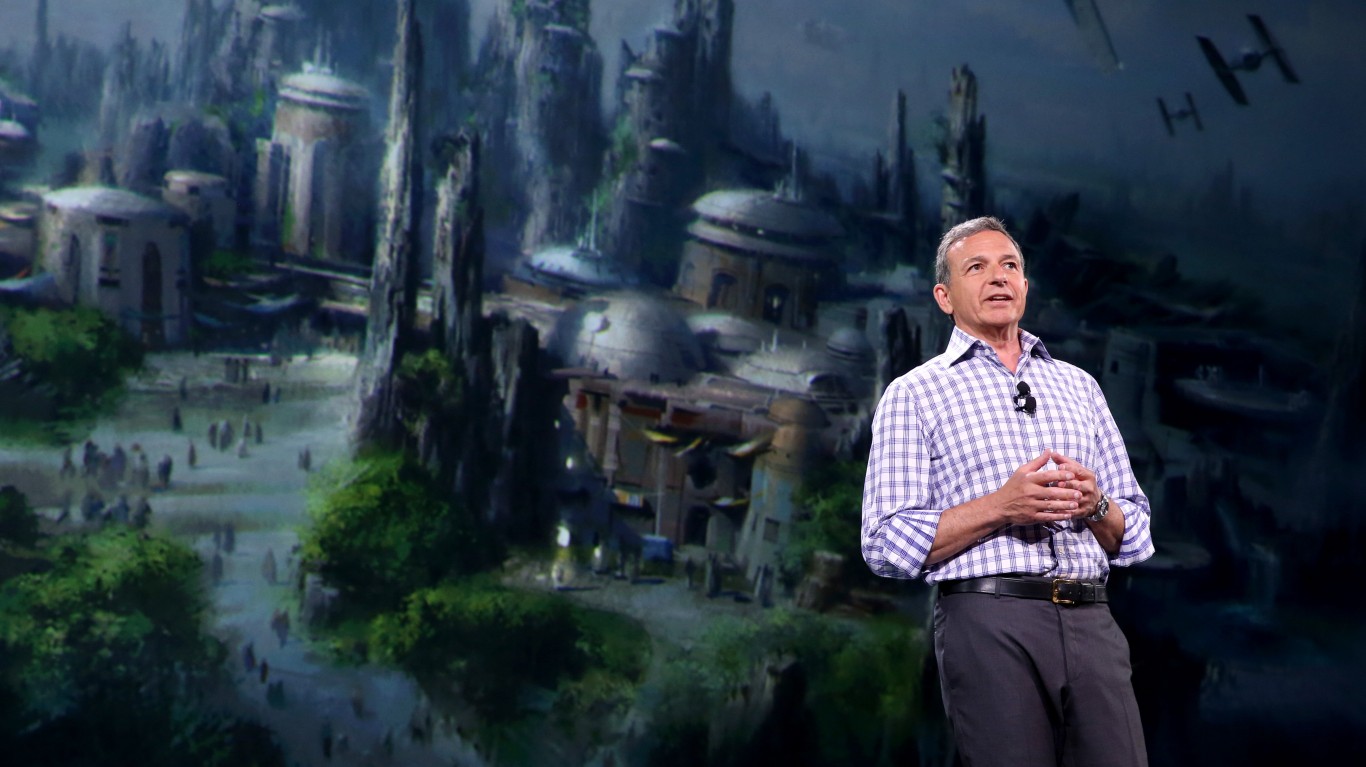Media
Disney Stock Faces Uncertainty as Storied CEO Retires

Published:
Last Updated:

When the story of the business world in the early 21st century is written, Walt Disney Co. (NYSE: DIS) CEO Bob Iger will be on the list of the most important chief executives, along with the likes of Jeff Bezos, Tim Cook and Warren Buffett. Iger steered Disney to the pole position among huge American entertainment companies. He did so through a series for clever mergers and acquisitions and with forward-thinking innovation.
Iger recently was replaced by new CEO Bob Chapek. Iger will stay on as executive board chair until the end of the year. He will keep much of his power because Chapek will report to him and Disney’s board.
The question of the company’s future, and the price of Disney stock, now depends on whether Chapek can fill Iger’s huge shoes.
Iger became chief executive officer of Disney in 2005, after the departure of longtime CEO Michael Eisner. Iger had been president and chief operating officer since 2000. Over the past 15 years, he has taken Disney from the position of niche studio and theme park company to a dominant force in streaming, movie production, television and cable programming, and a global theme park network that includes 12 locations. Among them are Tokyo Disneyland, Disney World, Hong Kong Disneyland and Shanghai Disneyland.
Iger’s transformation of Disney puts him in a tiny group of CEOs who have completely transformed huge companies in the past 25 years. This list includes Lou Gerstner of IBM, Lee Iacocca of Chrysler, Jack Welch of General Electric, Jeff Bezos of Amazon and Tim Cook of Apple.
Iger got his job because he was an executive with Capital Cities/ABC, which Disney bought in 1996.
A number of executives at both Capital Cities and Disney vied for the CEO job. Then CEO Eisner began to argue with members of the Disney family. The friction led to the need for a new CEO. Iger was waiting in the wings.
Disney is among the oldest entertainment companies in America, and one of the few that has survived for decades basically intact. Founded by Walt Disney and his brother Roy, the original Disney was little more than an animation studio. Disneyland, the first major diversification, was opened in 1955. The company moved into TV production at about the same time.
Iger went on a shopping spree right after he became CEO. He bought animation filmmaker Pixar in 2006 for $7.4 billion. In 2009, he bought Marvel for $4.0 billion.
That was followed by the buyout of Lucasfilm, which created Star Wars, in 2012 for $4.1 billion. Finally, his blockbuster deal was to buy most of 21st Century Fox for $71.0 billion last year.
Disney’s stock price has been rocked recently by uncertainty about Chapek, who ran Disney’s theme parks before he was promoted to CEO. The spread of the coronavirus has hurt Disney’s theme park business and threatens movie theater attendance as well.
The price movement was much more positive before recent worry, but the shares have still underperformed the market. In the past five years, Disney stock is up 13%, compared to a rise of 43% in the S&P 500. The Dow Jones industrial average is up 42% over that period. While Disney’s share price may be relatively weak, the company does pay a dividend. The current yield is 1.49%.
Disney’s revenue has risen sharply over the past several years, primarily because of acquisitions. In 2016, it posted revenue of $55.6 billion. In the immediate trailing 12 months, that figure has risen to $75.1 billion. Net income was $9.4 billion in 2016. In the most recent trailing 12 months, it was $10.4 billion.
In the most recent quarter, Disney reported revenue of $19.1 billion, up 34% from the year-ago period. Net income was $785 million, down 66%. Iger cast the numbers in a positive light as he reflected on what would be the results from the tail end of his period as CEO: “Our solid results in the fourth quarter reflect the ongoing strength of our brands and businesses.”
That has not entirely shown up at the bottom line.
Iger’s final big gamble is that Disney can compete with video streaming leaders Amazon and Netflix. His theory is that a broad number of people will want to watch Disney video content, including Pixar, Marvel and Star Wars films they cannot see anywhere else.
Disney+, the new streaming service, is off to a strong start. The most recent estimate is that Disney already has over 30 million subscribers.
The last few years made people forget how much banks and CD’s can pay. Meanwhile, interest rates have spiked and many can afford to pay you much more, but most are keeping yields low and hoping you won’t notice.
But there is good news. To win qualified customers, some accounts are paying almost 10x the national average! That’s an incredible way to keep your money safe and earn more at the same time. Our top pick for high yield savings accounts includes other benefits as well. You can earn up to 3.80% with a Checking & Savings Account today Sign up and get up to $300 with direct deposit. No account fees. FDIC Insured.
Click here to see how much more you could be earning on your savings today. It takes just a few minutes to open an account to make your money work for you.
Thank you for reading! Have some feedback for us?
Contact the 24/7 Wall St. editorial team.